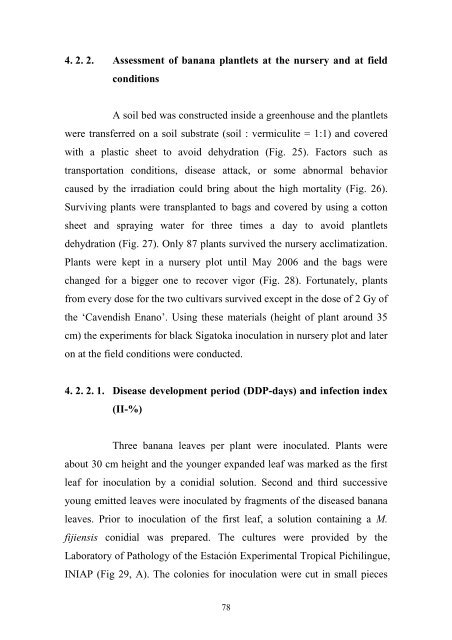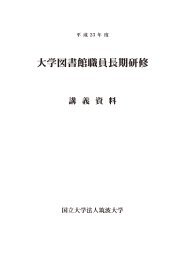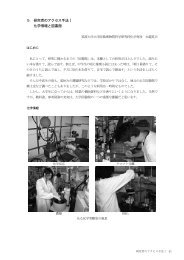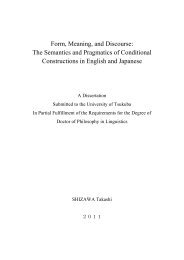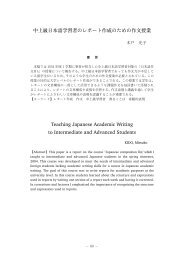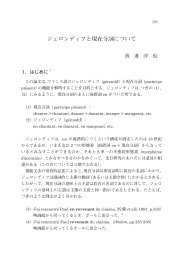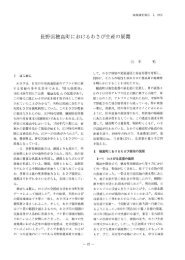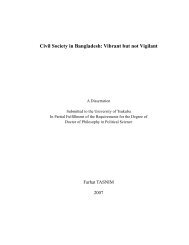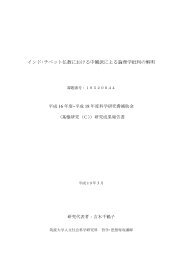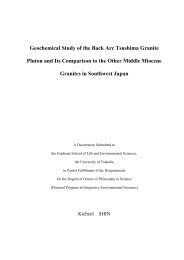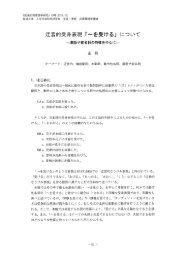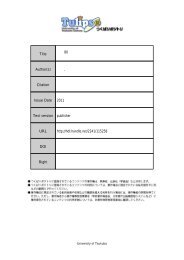Gamma Rays and CarbonIon-Beams Irradiation for Mutation ...
Gamma Rays and CarbonIon-Beams Irradiation for Mutation ...
Gamma Rays and CarbonIon-Beams Irradiation for Mutation ...
You also want an ePaper? Increase the reach of your titles
YUMPU automatically turns print PDFs into web optimized ePapers that Google loves.
4. 2. 2. Assessment of banana plantlets at the nursery <strong>and</strong> at field<br />
conditions<br />
A soil bed was constructed inside a greenhouse <strong>and</strong> the plantlets<br />
were transferred on a soil substrate (soil : vermiculite = 1:1) <strong>and</strong> covered<br />
with a plastic sheet to avoid dehydration (Fig. 25). Factors such as<br />
transportation conditions, disease attack, or some abnormal behavior<br />
caused by the irradiation could bring about the high mortality (Fig. 26).<br />
Surviving plants were transplanted to bags <strong>and</strong> covered by using a cotton<br />
sheet <strong>and</strong> spraying water <strong>for</strong> three times a day to avoid plantlets<br />
dehydration (Fig. 27). Only 87 plants survived the nursery acclimatization.<br />
Plants were kept in a nursery plot until May 2006 <strong>and</strong> the bags were<br />
changed <strong>for</strong> a bigger one to recover vigor (Fig. 28). Fortunately, plants<br />
from every dose <strong>for</strong> the two cultivars survived except in the dose of 2 Gy of<br />
the ‘Cavendish Enano’. Using these materials (height of plant around 35<br />
cm) the experiments <strong>for</strong> black Sigatoka inoculation in nursery plot <strong>and</strong> later<br />
on at the field conditions were conducted.<br />
4. 2. 2. 1. Disease development period (DDP-days) <strong>and</strong> infection index<br />
(II-%)<br />
Three banana leaves per plant were inoculated. Plants were<br />
about 30 cm height <strong>and</strong> the younger exp<strong>and</strong>ed leaf was marked as the first<br />
leaf <strong>for</strong> inoculation by a conidial solution. Second <strong>and</strong> third successive<br />
young emitted leaves were inoculated by fragments of the diseased banana<br />
leaves. Prior to inoculation of the first leaf, a solution containing a M.<br />
fijiensis conidial was prepared. The cultures were provided by the<br />
Laboratory of Pathology of the Estación Experimental Tropical Pichilingue,<br />
INIAP (Fig 29, A). The colonies <strong>for</strong> inoculation were cut in small pieces<br />
78


